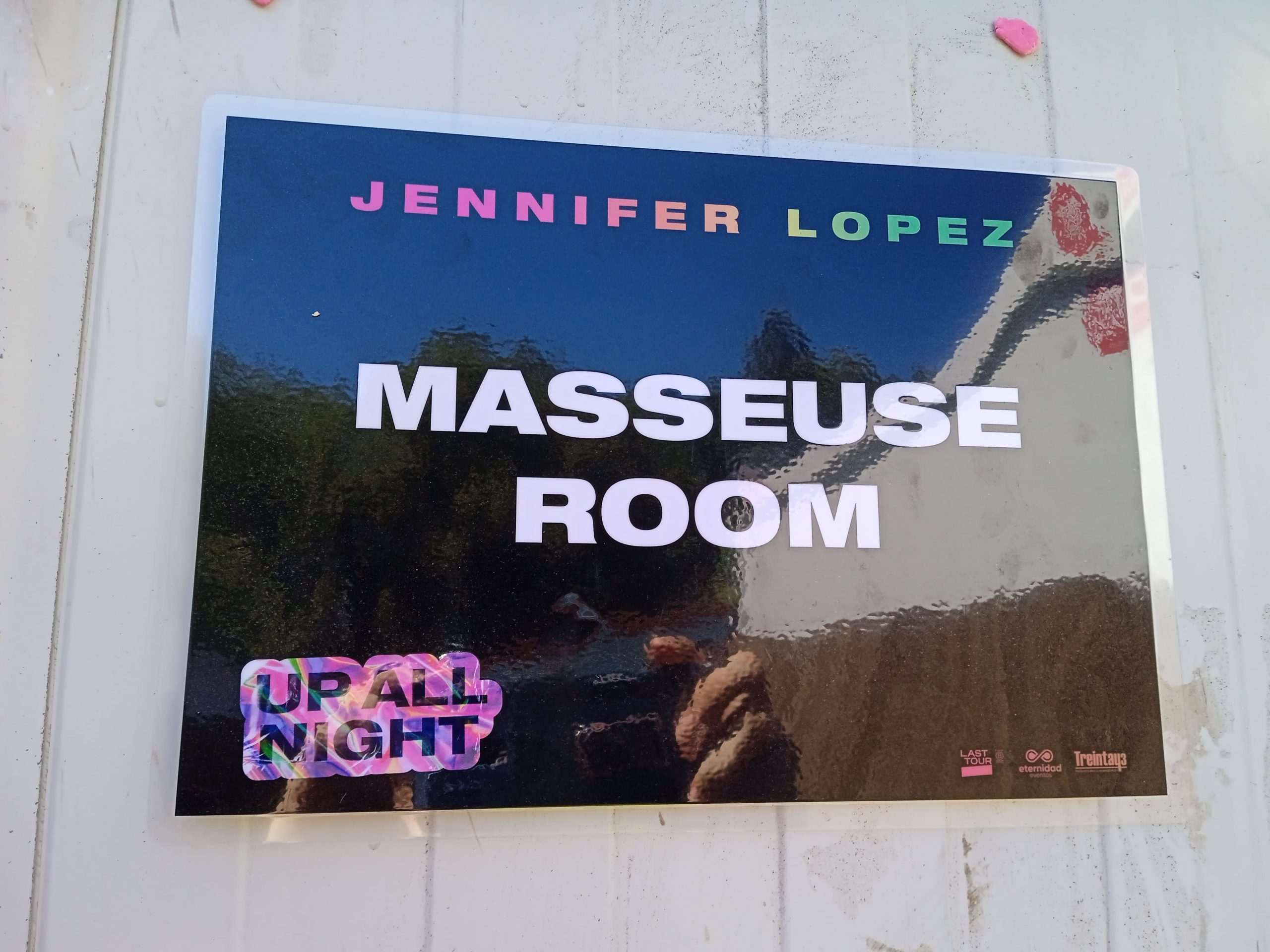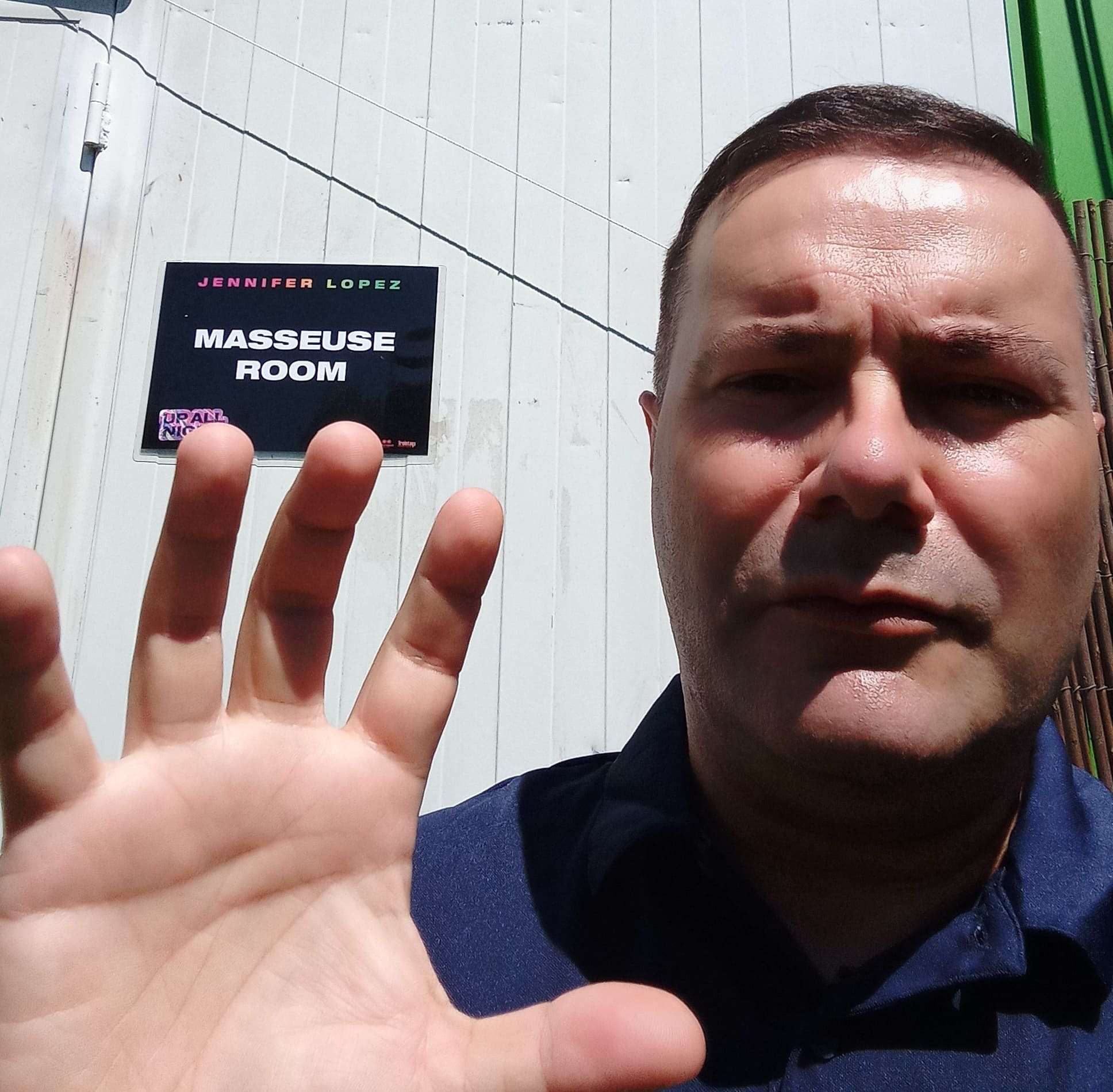
Interview with José Antonio Sánchez – Therapist to the Stars, Former RC Celta de Vigo Specialist, and Director of the European Parasanitary School
When Jennifer López performed in Pontevedra, Spain, few knew that behind her physical well-being—and that of her entire team—stood José Antonio Sánchez, an expert with nearly 30 years of experience in massage therapy and natural healing. Chosen to provide personalized care during the artist’s stay in Galicia, Sánchez had already built a reputation as the therapist for RC Celta de Vigo and now leads the prestigious Escuela Europea Parasanitaria (ESPS).
How did such a unique opportunity come your way?
It was handled very discreetly, as these types of jobs usually are. The request came through Ruth Beltrán from Belmu Masajes in Santiago de Compostela, a former student of mine who had previously worked with artists like Green Day and regularly treats pilgrims. It was all based on trust. I met the requirements, and they considered me the right fit. Beyond the honor of working with someone like Jennifer, what stood out most was the professionalism and warmth of her tour team.
Is it intimidating to work with an international star?
There’s always some excitement, of course, but after so many years, the key is to stay focused. I’ve treated many athletes and public figures. While Jennifer López is a global icon, I approach every client with the same respect, professionalism, and dedication. At home, we joked about it: I told my daughter, “I’ve now treated two Grammy winners,” referring also to José Manuel Pinto ‘Wahin’. Over the years, I’ve also worked with royalty, TV personalities, and a wide variety of artists.
How would you summarize your career so far?
I started almost 30 years ago, working in spas and ski resorts. From there, I transitioned into the sports world, collaborating with RC Celta de Vigo, the Galician National Team, Pontevedra CF, futsal teams, and participating in humanitarian projects in Africa. I’ve also been hired in Germany, Portugal, and the Netherlands. I’ve always tried to balance my roles as a massage therapist, naturopath, and educator. And, of course, being a father, which sometimes means turning down international opportunities, such as conferences or sports events.
You’re also a well-known naturopath. How did that begin?
I actually started with natural therapies that I learned from elderly practitioners. Since I was young, I was fascinated by plants. I remember doing a school project at around nine years old on medicinal plants in Galician, with help from my grandmother María. That early curiosity led me to study naturopathy, which eventually brought me to massage therapy.
You’ve written many books. Which one would you recommend?
[Laughs] All of them, of course! But it depends on what the reader is interested in. I write primarily about naturopathy and manual therapies. For instance, the Dictionary of Medicinal Plants is now in its 4th edition since I published it in 2017. The Guide to Herbodietetics is more technical, like my other manuals on bandaging, massage protocols, iridology, Knap points, visceral osteopathy, Shantala massage, and a five-volume Naturopathy Encyclopedia with over 1,000 pages.
Some of the books are more accessible to a general audience, like Anatomy for Natural Therapies or Clean Your Intestines of Crap. I’ve also created 5 educational posters, such as Emotions Affect Our Gut Flora: Psychodysbiosis, which I presented in 2017 at the University of Santiago de Compostela during the Spanish Probiotics and Prebiotics Society Conference. In total, I’ve written 14 books and 5 posters, all before the age of AI [laughs].
Your school offers university diplomas. What impact does that have on students?
When I founded the European Parasanitary School (ESPS) in 2005, offering university diplomas seemed almost impossible. But we always maintained high standards to ensure our students received top-level training, regardless of the laws in each country where they may work. Now, with agreements involving three universities, we’ve taken a major step forward in recognition and international credibility.
Your school has expanded internationally. How did that happen?
We started 20 years ago in Pontevedra with the aim of providing quality training in natural therapies. Today, we have centers in Vigo, Santiago, and A Coruña, and we’ve formed partnerships in over 11 countries, including Spain, Portugal, Bolivia, Thailand, Senegal, Gambia, the UK, Germany, China, Mexico, and Venezuela. But beyond numbers, the real strength of the project lies in the people: students, teachers, and patients. They’re the heart of what we do.
What values are most important in your teaching approach?
 Teaching technique is important, but values like humility, professional ethics, and respect for the patient matter even more. Passion for the field is something you can feel, and I always try to help my students nurture that. It moves me to see them succeed abroad, knowing I may have contributed something to their journey.
Teaching technique is important, but values like humility, professional ethics, and respect for the patient matter even more. Passion for the field is something you can feel, and I always try to help my students nurture that. It moves me to see them succeed abroad, knowing I may have contributed something to their journey.
Do you believe natural therapies have a promising future?
Absolutely. There’s a growing awareness of holistic well-being, and complementary therapies are gaining more and more value. As long as they’re practiced professionally and within legal frameworks, they have a solid place in modern healthcare.
After such high-pressure experiences, like working with international stars, what stays with you?
What stays with me is the learning and the satisfaction of contributing to the well-being of a team striving for excellence. It’s not just about applying a technique—it’s about being part of a system that aims to deliver perfection. It’s a quiet responsibility, but deeply rewarding.











